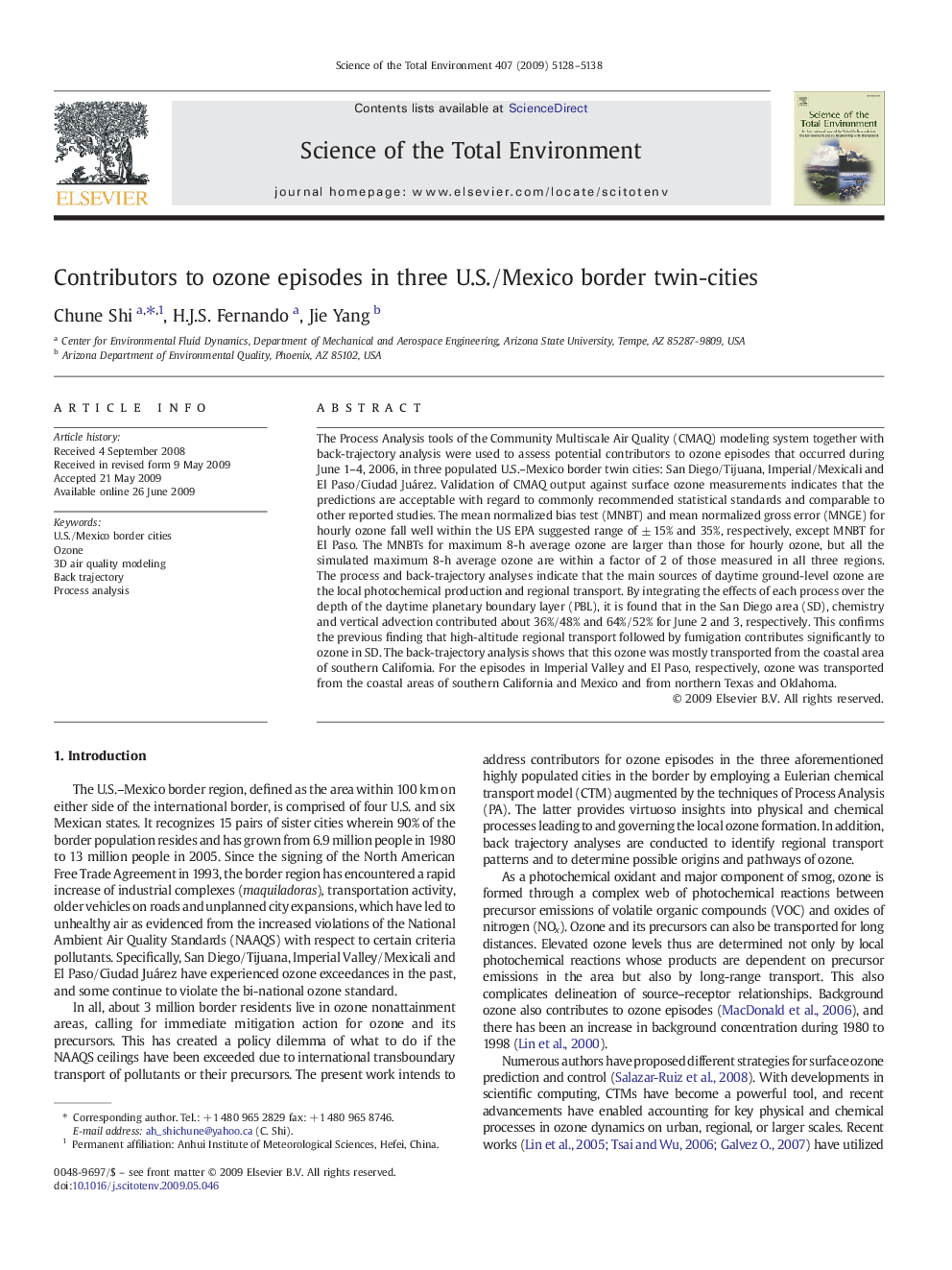| کد مقاله | کد نشریه | سال انتشار | مقاله انگلیسی | نسخه تمام متن |
|---|---|---|---|---|
| 4431592 | 1619892 | 2009 | 11 صفحه PDF | دانلود رایگان |

The Process Analysis tools of the Community Multiscale Air Quality (CMAQ) modeling system together with back-trajectory analysis were used to assess potential contributors to ozone episodes that occurred during June 1–4, 2006, in three populated U.S.–Mexico border twin cities: San Diego/Tijuana, Imperial/Mexicali and El Paso/Ciudad Juárez. Validation of CMAQ output against surface ozone measurements indicates that the predictions are acceptable with regard to commonly recommended statistical standards and comparable to other reported studies. The mean normalized bias test (MNBT) and mean normalized gross error (MNGE) for hourly ozone fall well within the US EPA suggested range of ± 15% and 35%, respectively, except MNBT for El Paso. The MNBTs for maximum 8-h average ozone are larger than those for hourly ozone, but all the simulated maximum 8-h average ozone are within a factor of 2 of those measured in all three regions. The process and back-trajectory analyses indicate that the main sources of daytime ground-level ozone are the local photochemical production and regional transport. By integrating the effects of each process over the depth of the daytime planetary boundary layer (PBL), it is found that in the San Diego area (SD), chemistry and vertical advection contributed about 36%/48% and 64%/52% for June 2 and 3, respectively. This confirms the previous finding that high-altitude regional transport followed by fumigation contributes significantly to ozone in SD. The back-trajectory analysis shows that this ozone was mostly transported from the coastal area of southern California. For the episodes in Imperial Valley and El Paso, respectively, ozone was transported from the coastal areas of southern California and Mexico and from northern Texas and Oklahoma.
Journal: Science of The Total Environment - Volume 407, Issue 18, 1 September 2009, Pages 5128–5138